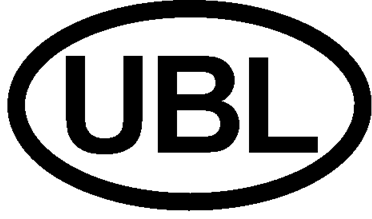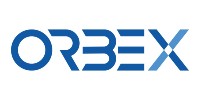UBL Commodities Subcommittee
Already a member?
Access the UBL community workspace here
Dedicated to developing and implementing standardized UBL document types and semantic library entries to support the trading and procurement processes of commodities
The UBL Commodities Subcommittee encompass a wide range of raw and recycled materials and primary agricultural products crucial to global supply chains and trade systems. Our goal is to enhance the efficiency, transparency, sustainability, and reliability of electronic trading and procurement in commodities markets through standardization, fostering better interoperability between commercial systems as well as regulatory systems (e.g., national single window systems), and ensuring compliance with international regulatory frameworks.
Scope of Work
1. Regulatory and Industry Collaboration:
– Engage with regulatory bodies, industry leaders, commodity traders, IT specialists, and end-users to gather comprehensive business, legal, and operational requirements.
– Establish continuous feedback mechanisms with stakeholders to refine standards based on practical use and evolving market needs.
– Contribute to existing UBL outreach initiatives such as workshops, webinars, and conferences to promote understanding and implementation of UBL in the context of commodities and their markets.
2. Development of Semantic Models:
– Document and maintain semantic models for UBL
Commodities trading and procurement, including suitable code lists and compatibility checks with existing financial, trade, and procurement standards.
– Develop dynamic frameworks to support updates to semantic libraries as market conditions and regulatory environments evolve.
3. Integration with Related Domains and Existing Standards:
– Identify related ISO Committees and Industry Groups: Determine if liaison required for coordination with other ISO committees and other SDOs in commodities trading and procurement to ensure UBL’s alignment and avoid duplication of efforts.
– Harmonize with Sector-Specific Protocols: Develop guidelines for harmonizing UBL with sector-specific protocols that govern commodity transactions, including support for the exchange of sustainability, traceability, and circular economy data to enhance the utility of UBL documents in real-world applications.
– Regulatory Adaptability: Create a framework for adapting UBL documents to meet the diverse regulatory requirements encountered in global commodity trading. This includes compliance with different national laws and international agreements relevant to commodities.
4. Compliance and Traceability:
– Propose relevant enhancements if any to the UBL standard to further comply with specific international trade laws, including data protection regulations and sustainability requirements as it relates to commodities.
– Propose relevant enhancements to traceability mechanisms within UBL documents to meet stringent global standards for sustainability and ethical sourcing as it relates to commodities use cases, as well as finished products that incorporate traced materials.
List of Deliverables
1. UBL Standard Drafts: Initial and revised drafts of UBL documents for commodities trading and procurement, and traceability.
2. Stakeholder Engagement Reports: Summary of feedback and insights from industry consultations and pilot testing.
3. Technical Specifications and Compatibility Reports: Detailed descriptions of semantic models and mappings with other standards.
4. Outreach and Up-to-Date Clear Documentation: Provides updated documentation and informative materials to facilitate adherence to standards.
5. Implementation Roadmap and Support Materials: Step-by-step guides and support materials for adopting UBL standards in commodities markets and trading systems.

UBL Commodities Sponsor

SC Leadership
Chair: Michael Coletta, Orbex
View other UBL subcommittees

“UBL 2.4 represents a significant advancement, featuring enhanced support for B2C transactions, which will greatly benefit businesses and consumers alike. Additionally, it offers improved alignment with U.S. tax models, ensuring compliance and facilitating smoother transactions. These enhancements reaffirm our commitment to evolving and adapting UBL to meet the ever-changing needs of global commerce.”
Kenneth Bengtsson, UBL TC Chair

SC Workspace

Press Release

Slide Deck
Frequently Asked Questions
We believe that the standardization of a proven, pragmatic, royalty-free XML syntax will encourage the proliferation of inexpensive off-the-shelf-software that “natively speaks” UBL and will thus drastically lower the cost of entry for small businesses into the electronic networks used by their larger trading partners. To put it another way, UBL means the end of the expensive one-off software systems that typified the EDI era.
UBL also provides the opportunity to end the debate over standards for business document formats that has discouraged the adoption of new technologies for conducting business in the digital age.
Possibly the largest impact of a standardized royalty-free data format over the long run will be its creation of an entire computing ecosystem, like the ecosystem that was created by the universal adoption of HTML and HTTP two decades ago. UBL is rapidly becoming established as the equivalent of HTML for business documents in the digital age.
Beginning with the 2005 adoption of UBL for all public sector invoicing in Denmark (known as OIOUBL), UBL has become the foundation for a number of successful European public procurement frameworks, including EHF (Norway), Svefaktura (Sweden), ePrior (European Commission DIGIT), the National Health Service (UK), and PEPPOL, the pan-European public procurement platform. The PEPPOL community (OpenPEPPOL) serves government agencies and their suppliers from Austria, Denmark, France, Ireland, Italy, Norway, Poland, and Sweden through a network of over 100 Access Point all exchanging UBL conformant documents.
Other implementations for eInvoicing include E-Fatura (Turkey), Factura Electronica (Peru), SimplerInvoicing (the Netherlands), CHORUS-factures (France) and Tradeshift (globally). The European eInvoice Service Providers Association (EESPA) also recommends UBL as the lingua franca for their Model Interoperability Agreement.
UBL has also become foundational to a number of efforts in the transport and logstics domain, including the European Common Framework (European Commission), DTTN (Port of Hong Kong), TradeNet (Port of Singapore), Electronic Freight Management (US), and Freightgate (globally).
In keeping with the original vision of UBL as a standard basis for electronic business in general, UBL is now increasingly used by organizations whose scope extends beyond the generic supply chain. These include the European Textile, Clothing, and Footwear industry group (eBiz-TCF) and Wehkamp, the largest online retailer in the Netherlands.
UBL is also incorporated as a reference format in a small but growing number of industry standardisation activities. These include CEN Workshop Agreement (CWA) 16667, Reference Architecture 2.0 for eBusiness Harmonisation in Textile/Clothing and Footwear Sectors, ISO TS 24533, an international technical specification developed by ISO TC 204 (Intelligent Transport Systems) for data interoperability in the movement and intermodal transfer of freight, and a companion international specification, ISO TS 17187, that identifies UBL as the collaborative syntax for harmonizing other syntaxes used throughout the supply chain domain for tracking the shipment of goods.
The implementations listed above are by no means exhaustive. UBL is available with open access. This means no registrations or approvals are required and there are no license fees to use UBL. As such it is not possible to know all the current implementations. We welcome details of other implementations if the owners are willing to share them.
UBL is the product of an open and accountable OASIS Technical Committee with participation from a variety of international and industry data standards organizations. It was originally approved as an OASIS standard in 2004 and is among the most mature and widely implemented OASIS Standards. The current version, UBL 2.1 (PDF), was approved in 2013.
In 2014 the European Commission declared UBL 2.1 was officially eligible for referencing in tenders from public administrations (one of the first non-European standards to be so recognized).
In 2015 UBL 2.1 was also approved as ISO/IEC 19845:2015, establishing UBL as a true international standard for use by governmental bodies globally. With this endorsement UBL has reached the maximum level of sanction possible for an international standard.
UBL was conceived as the part of the UN/CEFACT-OASIS ebXML partnership that would standardize XML data formats for electronic business. While widely used outside of ebXML and independent of any particular infrastructure framework, UBL continues to complement the ebXML framework of standards.
Also within OASIS, UBL complements and in some cases builds upon the work of the Tax-XML, eGov, Code List Representation, and Business Document Exchange Technical Committees.
UBL provides components to realize the Open-edi model in real-world trading communities as described by the Open-edi Reference Model standardized as ISO/IEC 14662:2010. As such UBL is a key component of the contribution of OASIS to the ISO/IEC/ITU/UNECE eBusiness MoU.
Enhancements in UBL 2.2
UBL 2.2 is a minor revision to the UBL family (because the new 2.2 schemas are backward-compatible with all UBL 2.1 and 2.0 documents). By maintaining complete backward compatibility with all UBL installations since 2006, UBL 2.2 adds these technical refinements and new functionalities without disturbing its extensive implementation base.
UBL 2.2 extends the functionality of UBL 2.1 by increasing the number of defined XML document types from 65 to 81. New document types are now available for eTendering, for business directories and agreements, and a new transportation document for the weight statement. All other additions are minor.
Enhancements in UBL 2.1 – business
UBL 2.1 extends the functionality of UBL 2.0 by increasing the number of defined XML document types from 31 to 65. In addition to the generic supply chain and procurement processes defined in UBL 2.0 (Catalogue, Quotation, Ordering, Fulfilment, Billing, Payment, Statement, Transport Services, and Certificate of Origin), UBL 2.1 adds support for eTendering, Vendor Managed Inventory, Intermodal Freight Management, Utility Billing, and Collaborative Planning, Forecasting, and Replenishment. It also adds two supplementary document types, Document Status and Document Status Request.
Aside from adding new document types and areas of functionality, UBL 2.1 also implements a number of improvements across the entire data library.
The several thousand data definitions in the UBL library have been thoroughly revised using an approach designed to aid the user attempting to understand the semantics of UBL business entities.
The financial information capabilities of UBL have been enhanced in the areas of financial accounting, payment mandates, trade financing, currency handling, and payments reconciliation in order to support downstream processing of invoices within financial services. Legal information capabilities have been enhanced to support advanced procurement and global trade using business models such as outsourcing, application service provision, and virtual services via cloud computing.
Enhancements in UBL 2.1 – technical
UBL 2.1 is a minor revision to UBL 2.0 (because the new 2.1 schemas are backward-compatible with all UBL 2.0 documents). By maintaining complete backward compatibility with all UBL installations since 2006, UBL 2.1 adds these technical refinements and new functionalities without disturbing its extensive implementation base.
The transition to a two-phase model of data verification begun in UBL 2.0 has been completed in UBL 2.1, enabling total flexibility in the application of code lists and other validation rules within the standard structure. This approach allows different versions of the same code list to be used in different document contexts.
Optional support for XAdES and other advanced digital signature schemes based on XML DSig is now bundled into the distribution by default, as are current versions of virtually all internationally recognized EDI code lists.
As an aid to implementers, UML and ASN.1 representations of the UBL information entities are provided in separate OASIS Committee Notes accompanying the UBL 2.1 release.
Archives of the mailing list used by OSIM members to conduct Committee work will be viewable following the Call for Participation. TC membership is required to post to this list. TC members are automatically subscribed.

New Members Welcome
Whether you want to actively contribute in decision-making or just observe progress from the inside, you will need to be an OASIS member.
If your employer is already on our current member list, submit this request form to be added to the TC Roster. If not, find out how to join OASIS.
Non-members may monitor the mailing list archives online, view approved documents, and provide feedback to our comments list. Contact Us for more information.